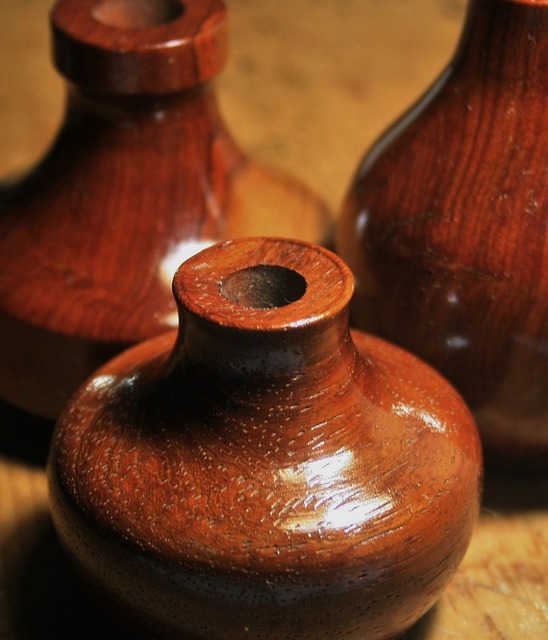The role of injection molding in modern manufacturing is transformative, particularly in sectors like automotive and consumer electronics. This process has evolved to incorporate advanced techniques that enhance efficiency, reduce material waste, and improve part quality through precise temperature control, injection pressure regulation, and optimized mold design. The integration of smart technologies, including predictive maintenance, real-time monitoring systems, and advanced algorithms, ensures consistent production while minimizing environmental impact. These innovations are pivotal in aligning with the principles of a circular economy, promoting sustainability by leveraging on-site recycling systems that create a closed-loop process for material utilization. The adoption of Industry 4.0 technologies further extends machinery lifespans and reduces downtime, ensuring high-quality outputs while maintaining environmental standards. Injection molding's continuous advancement is a testament to its commitment to marrying efficiency with sustainability, reflecting a future where the industry sets new benchmarks for eco-friendly production.
In an era where environmental consciousness is paramount, the pursuit of minimizing material waste in production processes has become a critical focus. This article delves into the pivotal role of injection molding—a manufacturing process that, when optimized, offers significant potential for sustainable resource utilization. We will explore cutting-edge techniques and innovations in this field, which not only enhance efficiency but also contribute to eco-friendly production. From the intricacies of efficient injection molding techniques to the integration of advanced software solutions, each section underscores the commitment to sustainability within the industry. Join us as we navigate the convergence of technology and environmental responsibility, highlighting how injection molding is evolving to meet the challenges of resource management and waste reduction in today’s manufacturing landscape.
- Efficient Injection Molding Techniques: Maximizing Resource Utilization
- – Explore the latest advancements in injection molding that optimize material usage and minimize waste.
- – Discuss the importance of process parameters in achieving high-efficiency production with minimal waste generation.
Efficient Injection Molding Techniques: Maximizing Resource Utilization

Injection molding is a prominent manufacturing process that involves injecting material under high pressure into a mold, allowing for the creation of complex and precise components in a single operation. This technique has been instrumental in shaping various industries, from automotive to consumer electronics. To maximize resource utilization within this process, manufacturers are increasingly adopting efficient injection molding techniques. These advancements focus on optimizing the melting, injecting, and cooling processes to reduce material waste and improve part quality. By fine-tuning parameters such as temperature control, injection pressure, and mold design, manufacturers can achieve better flow dynamics and fill the molds more completely without excess material. Additionally, implementing predictive maintenance and real-time monitoring systems helps ensure that equipment functions at peak performance, further minimizing waste. The integration of smart manufacturing technologies, including machine learning algorithms and automated process adjustments, is enabling a paradigm shift towards a more sustainable production environment. This not only conserves materials but also enhances the overall efficiency and sustainability of injection molding operations. As such, the industry is witnessing a transformation where resource conservation is becoming as critical as the end product’s quality and functionality. By leveraging these efficient techniques, manufacturers can significantly contribute to environmental sustainability while maintaining high production standards.
– Explore the latest advancements in injection molding that optimize material usage and minimize waste.

3D printing technology has revolutionized the field of injection molding by enabling manufacturers to optimize material usage and significantly minimize waste. Advanced simulation software now allows for precise prediction of fill patterns, cooling rates, and part ejection conditions, leading to more efficient use of materials. These simulations help in fine-tuning the mold design to accommodate the exact amount of resin needed, thus reducing excess material consumption. Additionally, the integration of real-time monitoring systems within injection molding machines has further enhanced efficiency. These systems can detect irregularities during the molding process and automatically adjust parameters to correct them, ensuring minimal waste and high-quality part production. The adoption of these technologies not only improves the sustainability of manufacturing processes but also reduces costs associated with material waste, making it a win-win scenario for both the environment and the bottom line of businesses in various industries. Moreover, the push towards circular economy principles has led to the development of recycling systems that can process scraps directly on-site, feeding them back into the molding machines after proper reprocessing. This closed-loop approach ensures that as much material as possible is utilized, further reducing the ecological footprint of injection molding operations. The synergy between advanced technology and a commitment to resource efficiency is paving the way for a future where waste in injection molding is not just minimized but turned into an asset.
– Discuss the importance of process parameters in achieving high-efficiency production with minimal waste generation.

Injection molding stands as a pivotal process in manufacturing precision-engineered components across various industries, from consumer electronics to medical devices. The efficiency and environmental impact of this process are largely determined by meticulously controlled parameters. These include the temperature and pressure settings, injection speed, mold design, and material selection, all of which must be optimized to ensure a high-yield output with minimal waste. By fine-tuning these parameters, manufacturers can reduce the amount of scrap and rework, thereby significantly lowering material waste and associated costs. The advancement in monitoring technologies and predictive analytics allows for real-time adjustments and corrections, further enhancing the precision and sustainability of injection molding operations. This not only streamlines production but also aligns with global environmental standards and consumer expectations for eco-friendly products. As such, the continuous refinement of these process parameters is a key driver in achieving both high-quality and sustainable manufacturing outcomes.
Furthermore, the integration of Industry 4.0 technologies into injection molding facilities is revolutionizing production efficiency. Smart sensors and machine learning algorithms enable predictive maintenance and real-time monitoring of the entire manufacturing process. These innovations help preemptively identify potential issues that could lead to material waste, thereby optimizing the production line’s performance. The implementation of such intelligent systems not only minimizes waste but also increases the lifespan of machinery and reduces downtime. In doing so, these technologies directly contribute to a more sustainable manufacturing process, aligning with the industry’s shift towards greener practices and leaner operations. Consequently, the focus on smart parameter management is essential in driving the injection molding sector towards greater efficiency and environmental responsibility.
Injection molding stands as a pivotal technique in modern manufacturing, where efficiency and resource optimization are paramount. The advancements highlighted in this article underscore the potential for significantly reducing material waste through precise process parameters and innovative production methods. By adopting these cutting-edge strategies, industries can not only enhance their operational efficiency but also contribute to a more sustainable future. The shift towards more responsible manufacturing practices, as detailed herein, is a step forward in aligning production with environmental considerations, ensuring that the benefits of injection molding extend beyond the products it creates.
